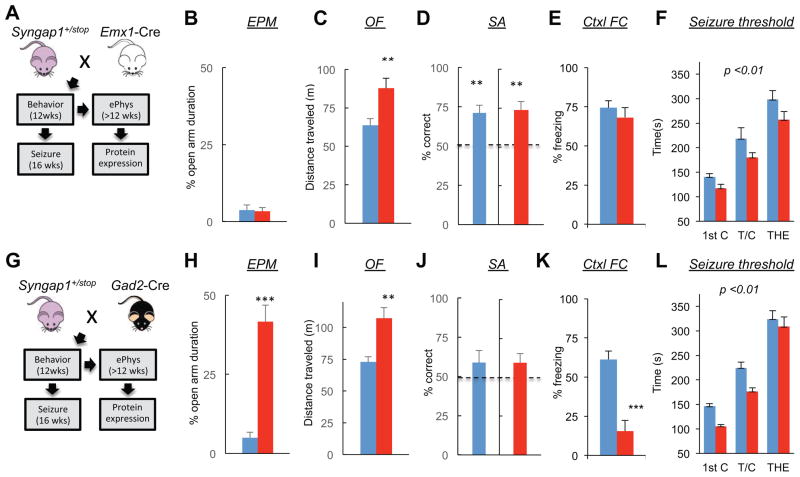Figure 5. Reversal of pathogenic mutations in forebrain glutamatergic neurons is sufficient to rescue cognitive and emotional endophenotypes present in Syngap1 mutants.
(A) Experimental schematic depicts mouse breeding strategy and implementation timing of a behavioral test battery and flurothyl-induced seizures for adult offspring of an Emx1-Cre x Syngap1+/lx-st cross.
(B–E) Emx1-Cre: Syngap1+/+ and Emx1- Syngap1+/lx-st mice were run in a behavioral battery consisting of an elevated plus maze task (EPM), an open field test (OFT), an unforced discrete-two-trial spontaneous alternation task (SA), and a contextual fear conditioning paradigm. Unpaired t tests were performed for EPM, OF, and Ctxl FC tests. One-sample t test with 50% chance level as hypothetical mean were performed with each group for SA. EPM - % Open arm duration: n=15 wt, n=15 mutant, t(28)=0.21, p=.83. OF - distance traveled (M): n=15 wt, n=15, t(28)=3.09; p=.0045. SA - % alternation: n=15 wt, t(14)=4.40; p=.00050; n=15 mutant: t(14)=4.43; p=.00060. Ctxl FC - % freezing: n=11 wt, n=11 mutant, t(20)=0.81, p=.42.
(F) Emx1-Cre: Syngap1+/+ and Emx1-Cre: Syngap1+/lx-st mice were subjected to a flurothyl-induced seizure paradigm. Time taken to reach three separate events, first clonus (1st C), tonic-clonic (T/C), and total hindlimb extension (THE), during the course of the procedure were measured and the two groups compared. RMANOVA – genotype effect: F(1,20)=8.35; p=.0091; genotype x event interaction: F(2,40)=0.22; p=0.80.
(G) Experimental schematic depicts mouse breeding strategy and implementation timing of a behavioral test battery and flurothyl-induced seizures for adult offspring of a Gad2-Cre x Syngap1+/lx-st cross.
(H–K) Gad2-Cre: Syngap1+/+ and Gad2-Cre: Syngap1+/lx-st mice were run in a behavioral battery consisting of an elevated plus maze task (EPM), an open field test (OFT), an unforced discrete-two-trial spontaneous alternation task (SA), and a contextual fear conditioning paradigm. Unpaired t tests were performed for EPM, OF, and Ctxl FC tests. One-sample t test with 50% chance level as hypothetical mean were performed with each group for SA. EPM - % Open arm duration: n=17 wt, n=16 mutant, t(31)=6.83, p=9.92E-08. OF - distance traveled (M): n=17 wt, n=16, t(31)=3.78; p=.00067. SA - % alternation: n=17 wt, t(16)=1.14; p=.27; n=16 mutant, t(15)=1.57; p=.14. Ctxl FC - % freezing: n=13 wt, n=12 mutant, t(23)=5.36, p=1.91E-05.
(L) Gad2-Cre: Syngap1+/+ and Gad2-Cre: Syngap1+/lx-st mice were subjected to a flurothyl-induced seizure paradigm. Time taken to reach three separate events, first clonus (1st C), tonic-clonic (T/C), and total hindlimb extension (THE), during the course of the procedure were measured and the two groups compared. RMANOVA – genotype effect-F(1,23)=11.69; p=.0024; genotype x event interaction-F(2,46)=0.96; p=0.39.
Wild-type, blue; mutants, red for all bar graphs. Error bars denote +SEM. *p<0.05, **p<0.01, ***p<0.001.

